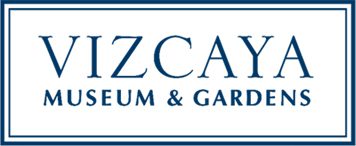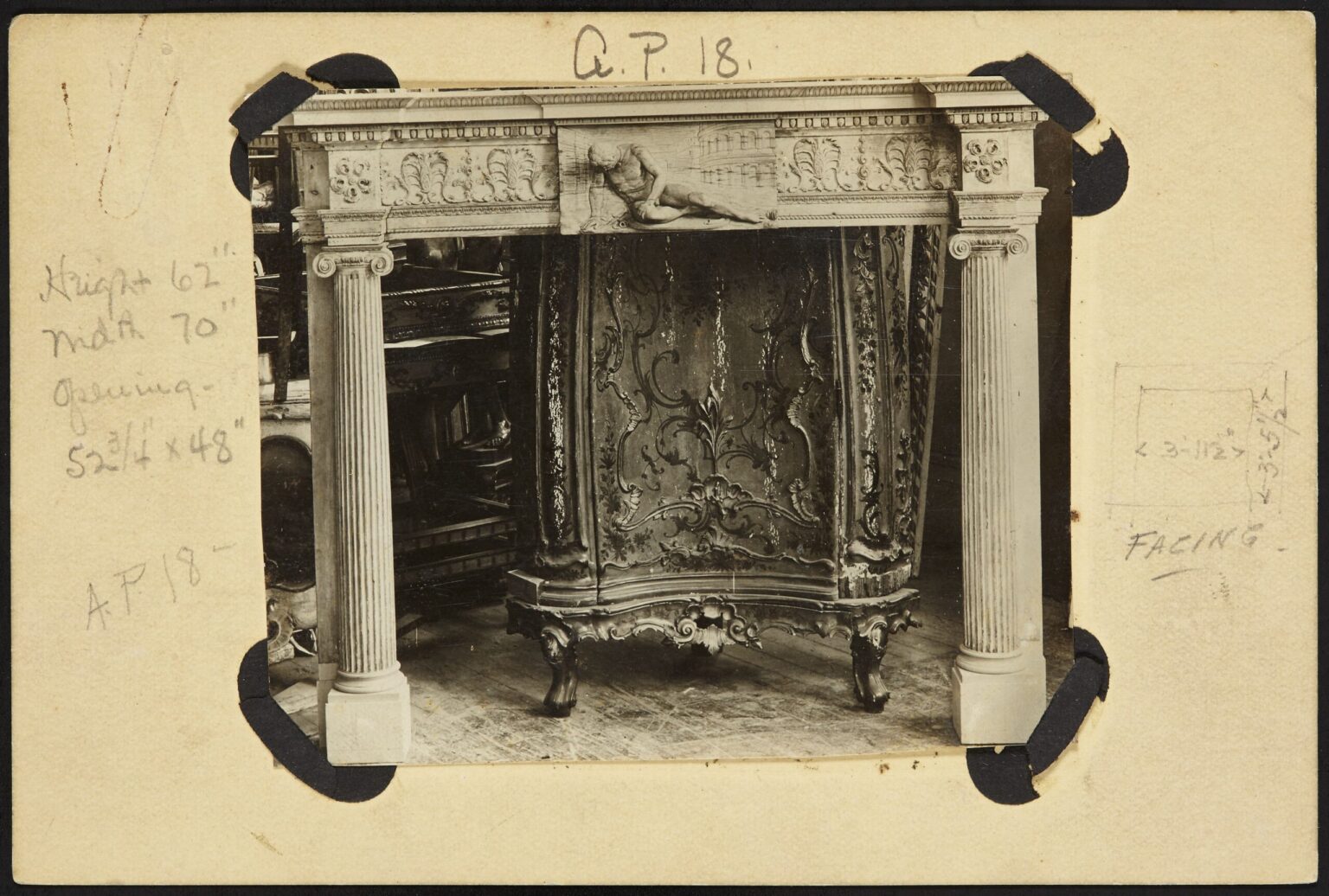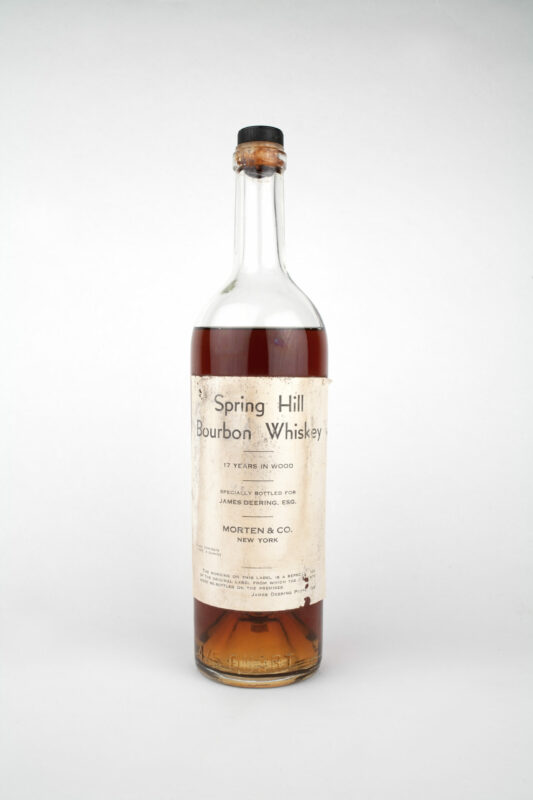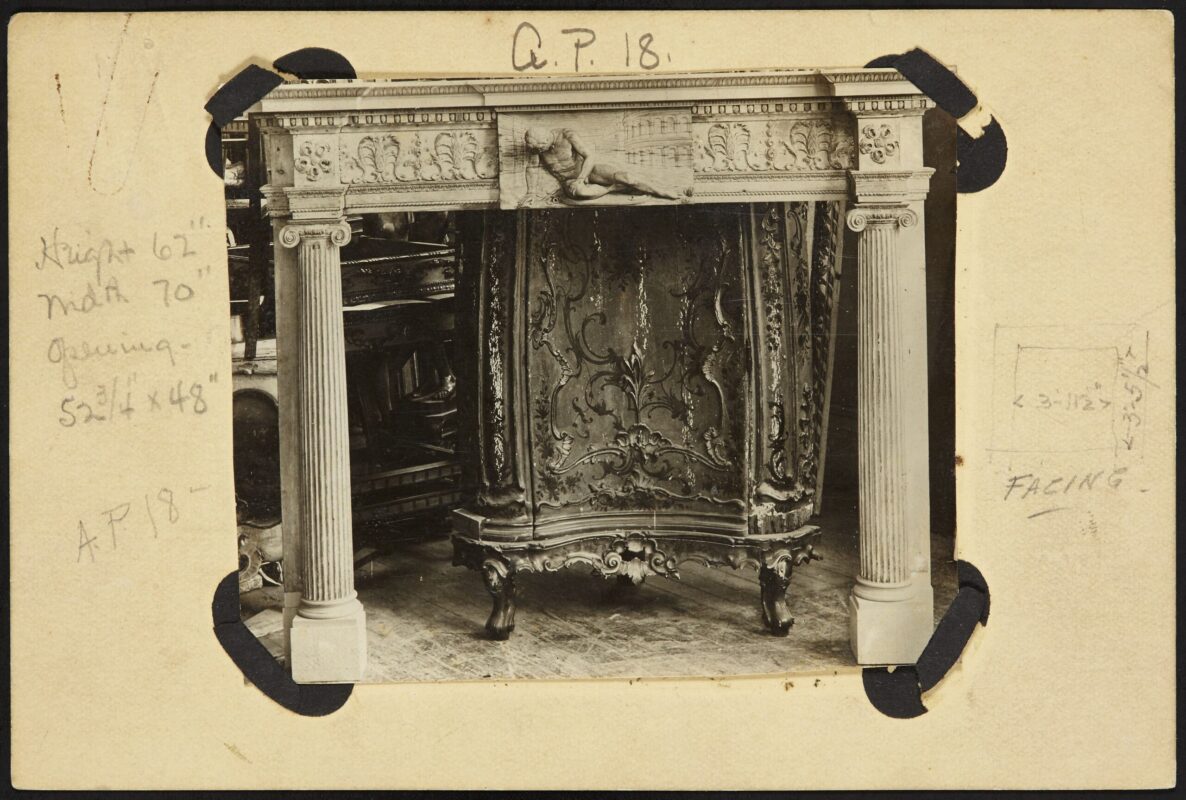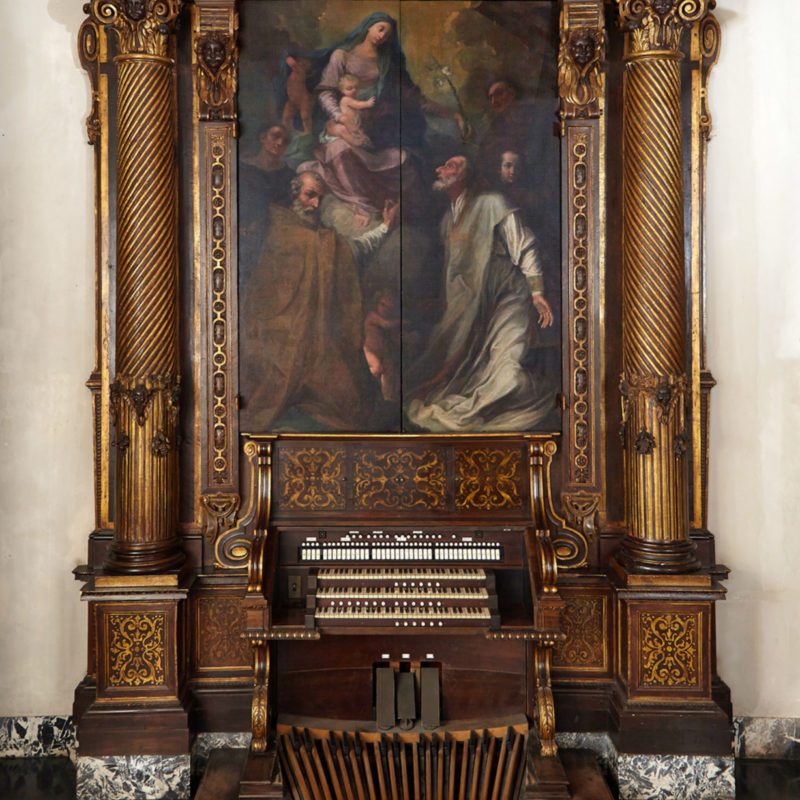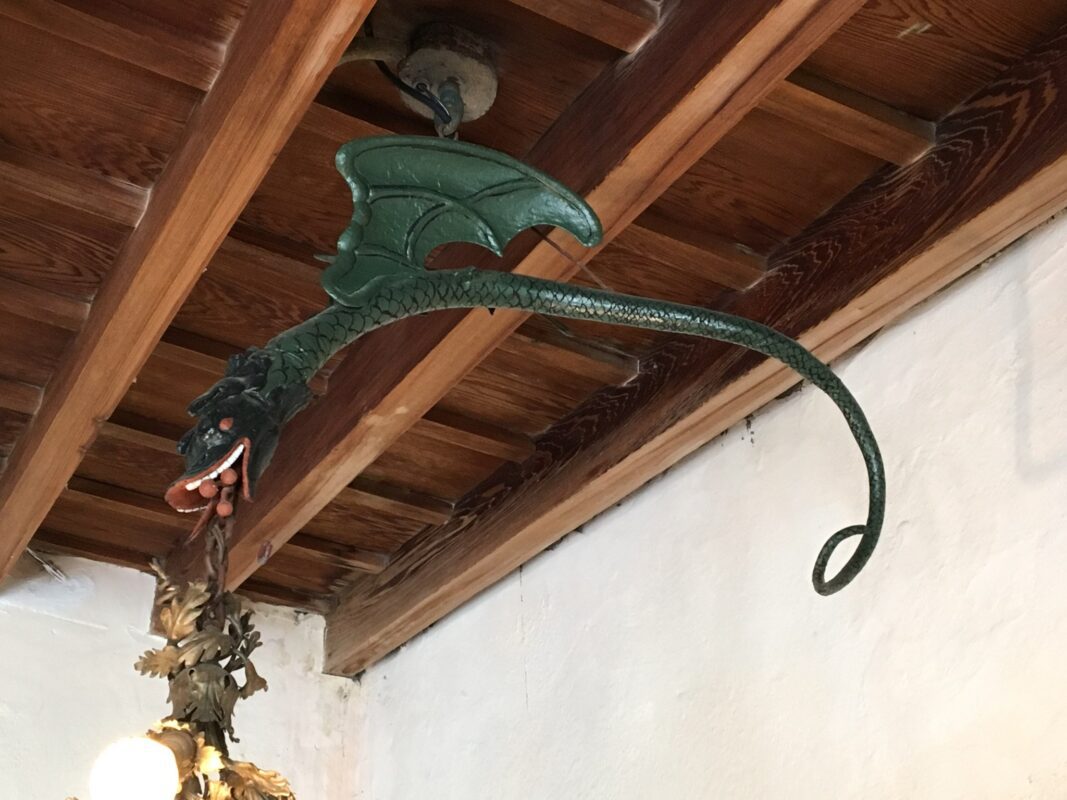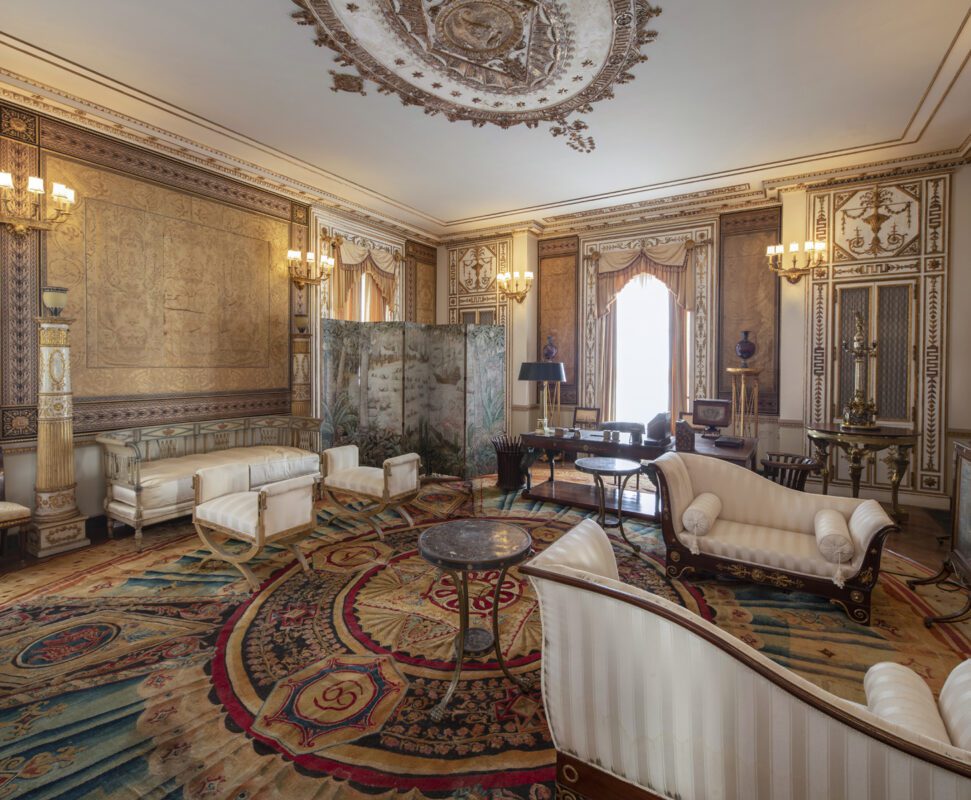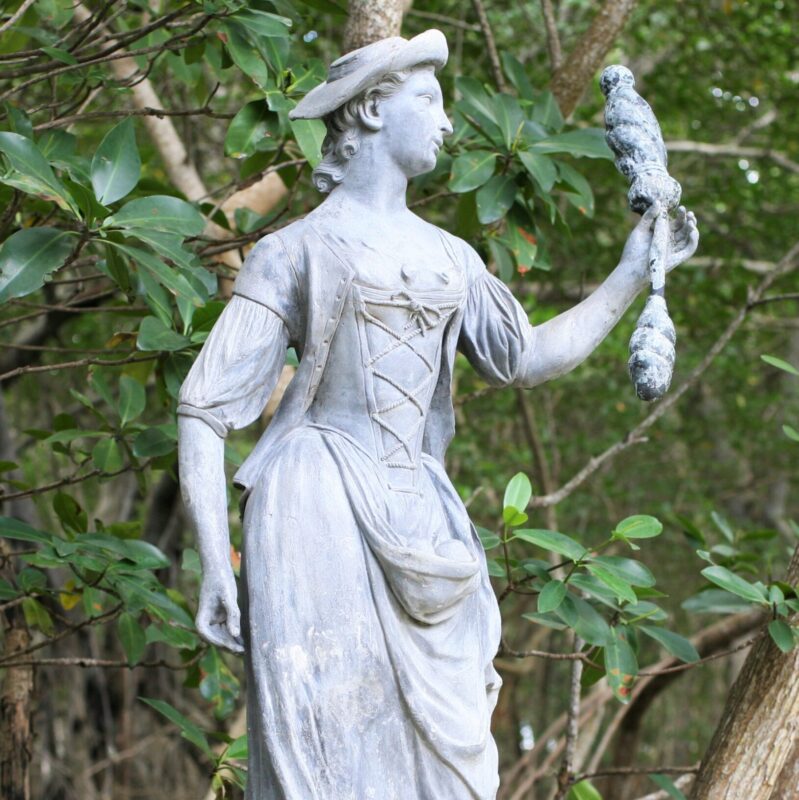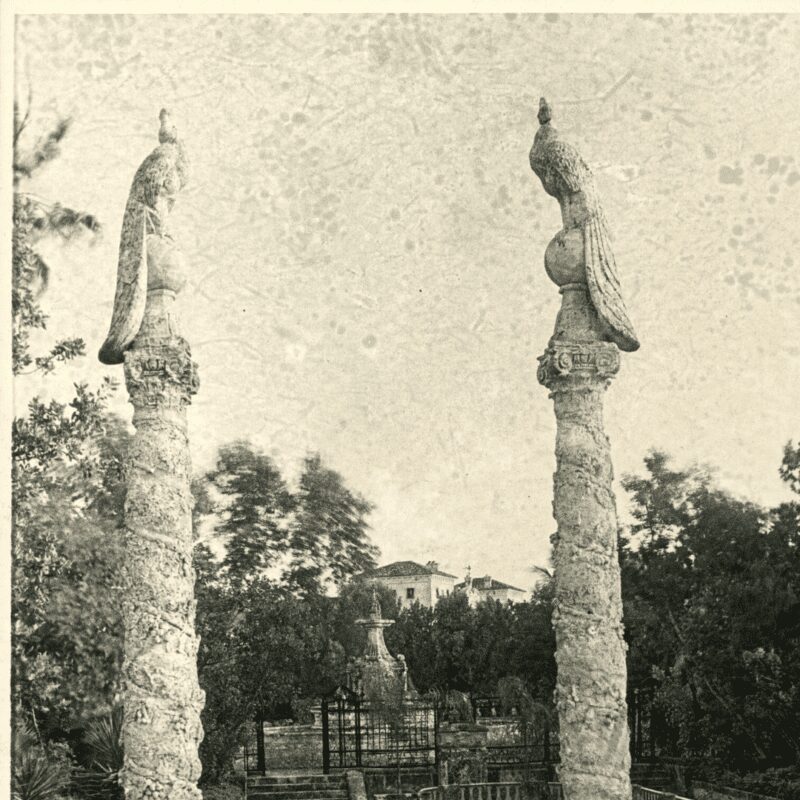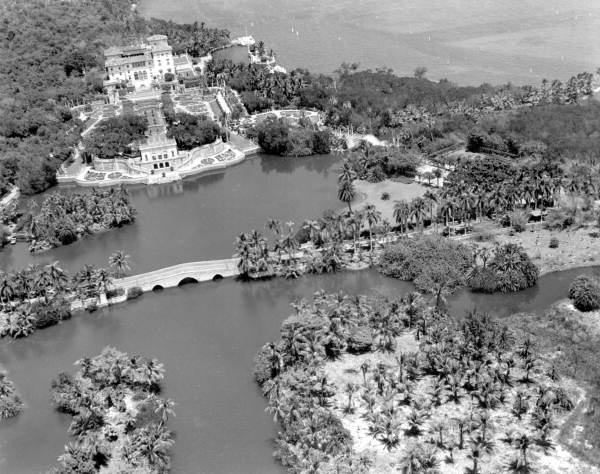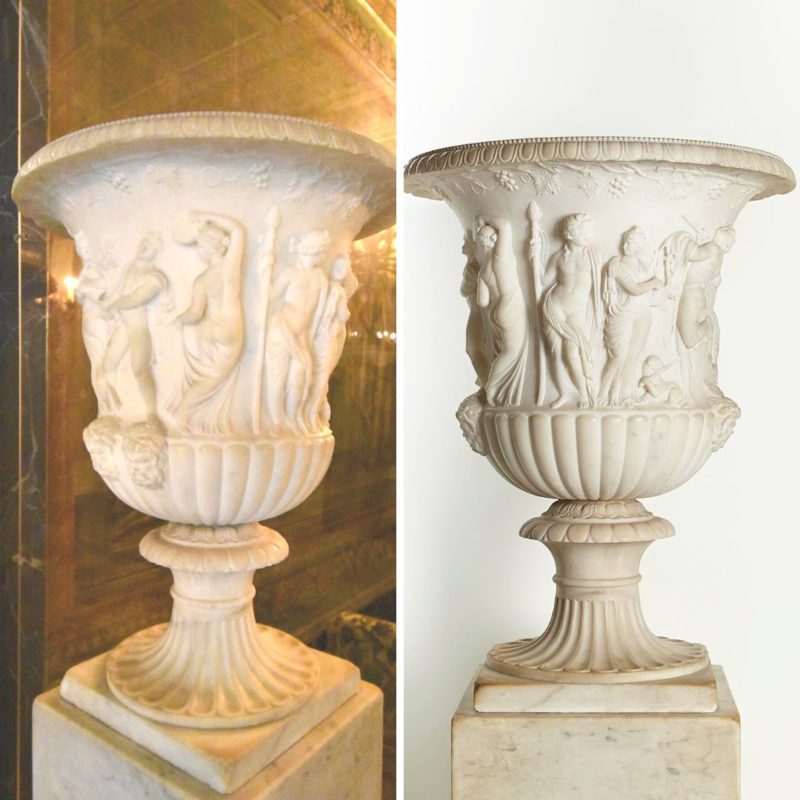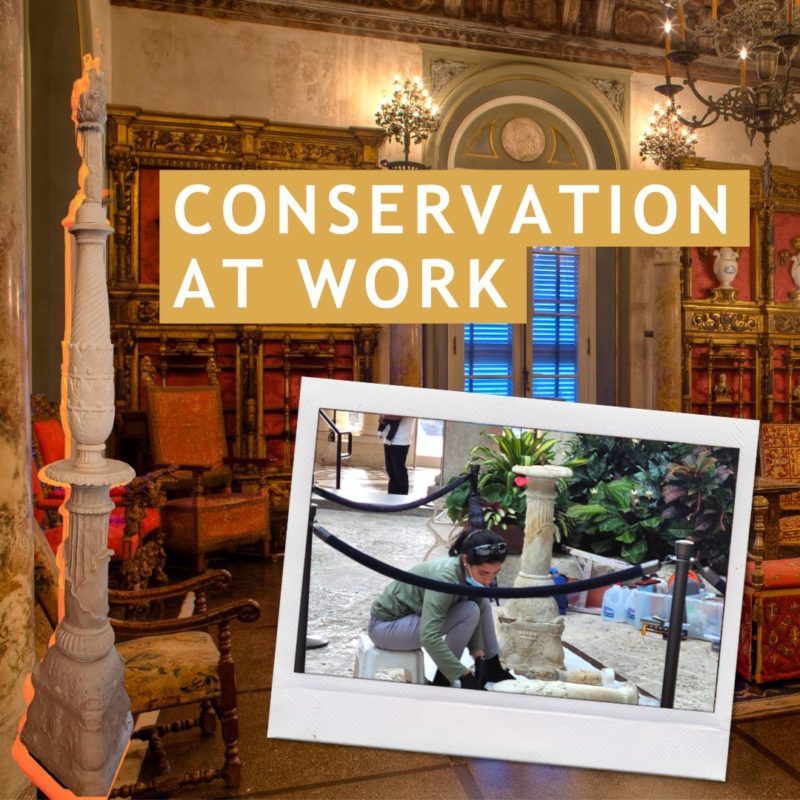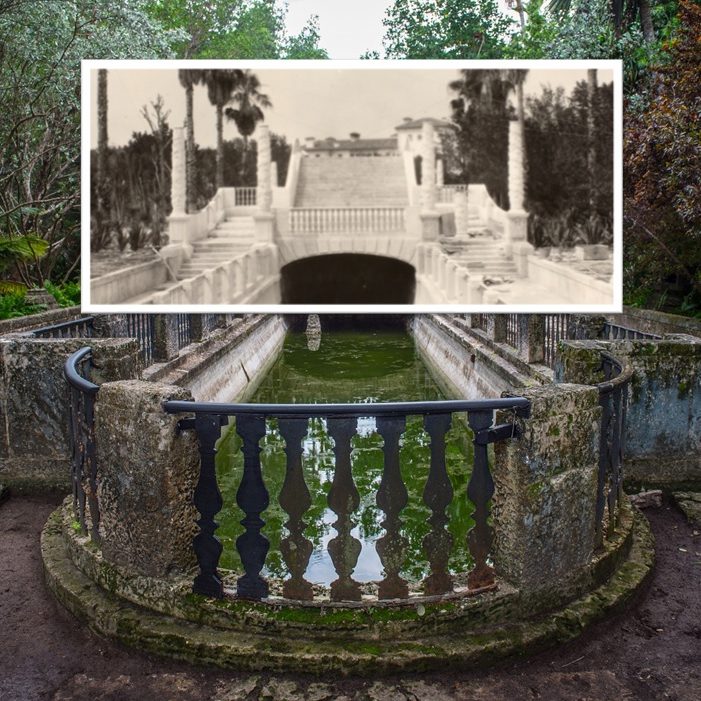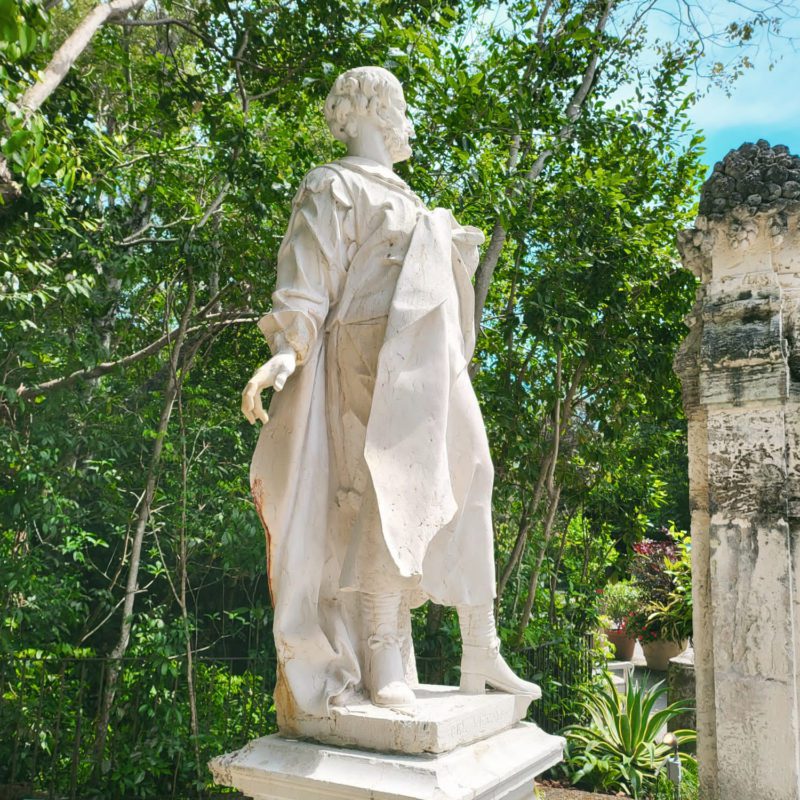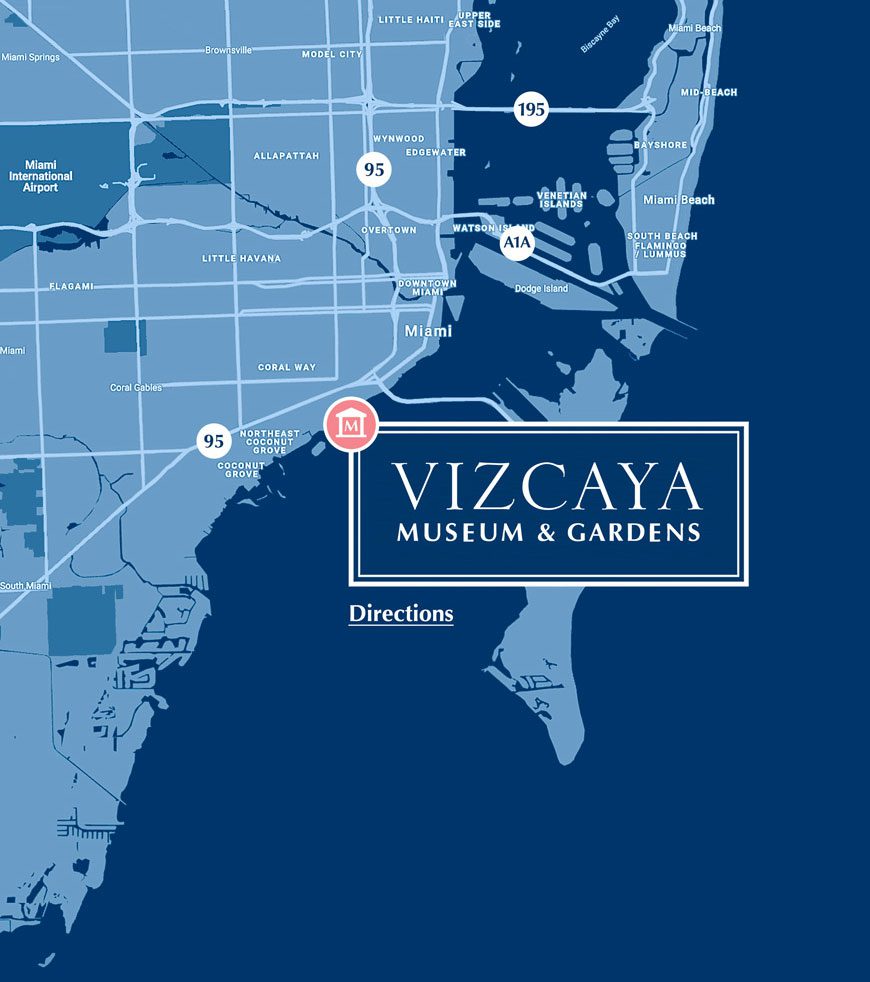Designing Vizcaya
The design and construction of Vizcaya was a unique challenge. Instead of designing the house and then finding objects to complement it, as was usually done, Vizcaya was designed around objects selected by James Deering and his artistic director Paul Chalfin. The pair made several trips abroad to purchase objects before the house was designed. Computer databases are common today, but when Vizcaya was being built, an efficient card catalog system was used to identify and track items that were purchased for Mr. Deering’s lovely winter home.
A Catalog of Purchases
The Purchase Ledger Cards hold vital information about Vizcaya’s original contents which now form the museum collection. The cards themselves are now part of the archival Estate Records Collection. Most are digitized, so they can be referred to without adding more wear and tear to the originals.
Purchase Ledger Cards, or PLCs, are grouped into 17 categories, from Architectural Parts to Tapestries, and from Bibelots to Silver. Each 4”x6” index card includes when and where the item was purchased, how much was paid, and even a small photograph.
Card BB30, shown here, is for a group of three large Chinese vases and their stands. BB stands for “bibelot,” which is a small decorative household object, what we might today call a trinket. While the front of the card is dominated by a photo, the back of the card contains a wealth of additional information.
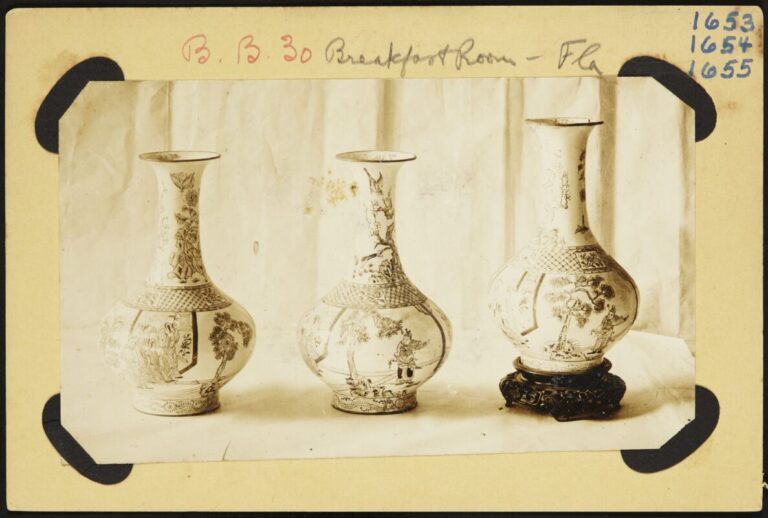
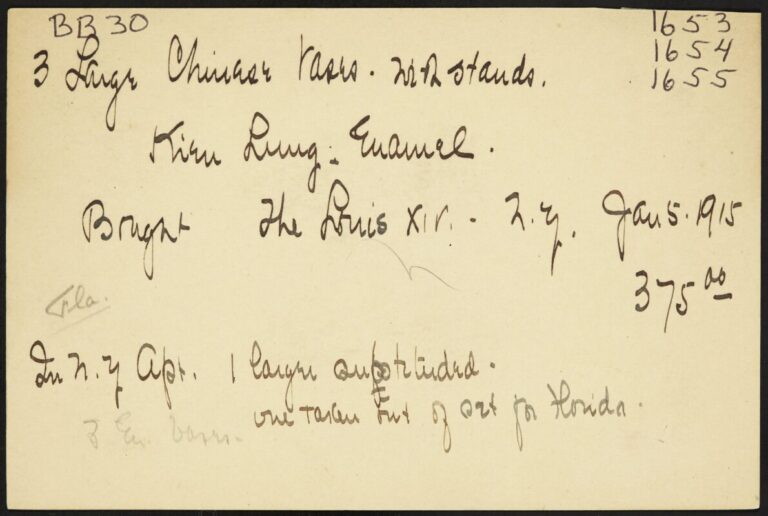
We see that the set was bought on January 5, 1915, for $375 at the Louis XIV Shop in New York. The card also tells us that the set, originally located in James Deering’s New York apartment, was split up, so that one could be “taken out of set for Florida.” The information on the front of the card is quite valuable, too. We see that the vase was to be placed in the Breakfast Room at Vizcaya. Today, it can be viewed in the Flower Room.
Architectural Features
Objects purchased for the house included more than just vases and small decorative items. In addition to these typical decorations, architectural parts were purchased to be incorporated into the construction of the house. Items included doors, gates, fireplaces, and even ceilings!
AP18 is Architectural Part 18, the fireplace mantel in the Library. Made of sculpted wood and dating to about 1780, it was purchased in Munich from L. Bernheimer for 1,800 marks.
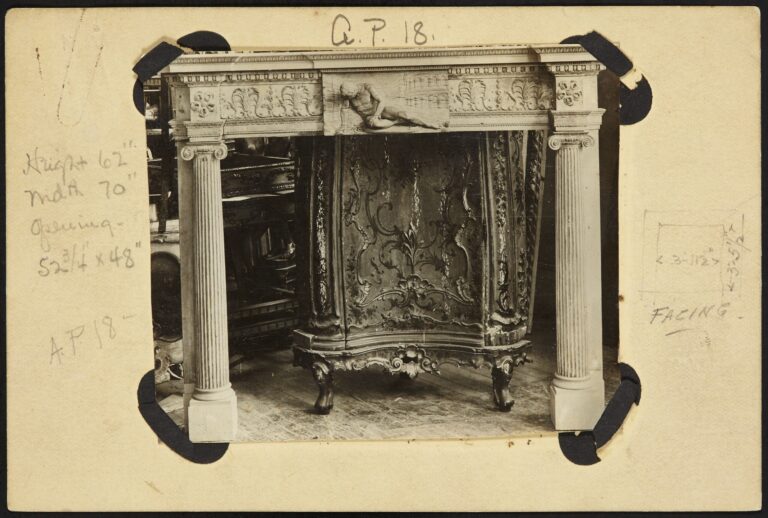
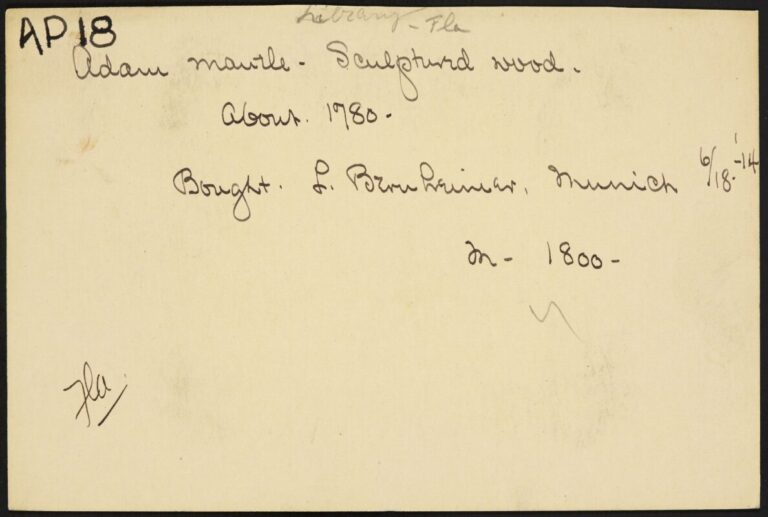
Penciled-in notes, sketches and measurements were sometimes included on these cards, showing that they were working documents that were very much used and referred to when Vizcaya was being built and furnished. Many items required several cards to fit addional information, as is the case with AP18.
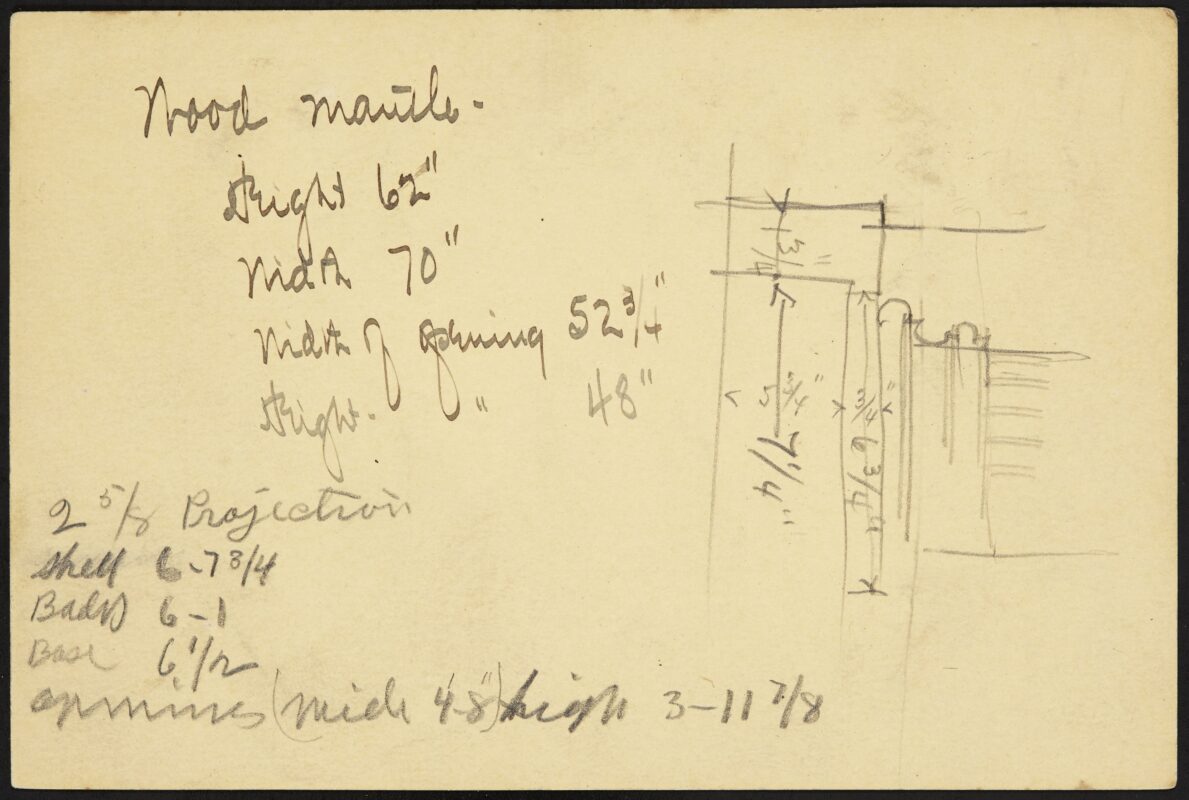
Missing Items
Not every item that was bought is still here at Vizcaya.
Like any household, some items were broken, some were given as gifts, and some were used in other family homes. Household Object 105, illustrated, is one of the items removed from the house. This card represents a pair of English pole screens, bought for $700 on Oct. 29, 1914. Pole screens were placed in front of a fireplace to shield a person from the direct heat and any stray sparks. They are not part of today’s museum object collection because they were ultimately sent to Mr. Deering’s Paris home.
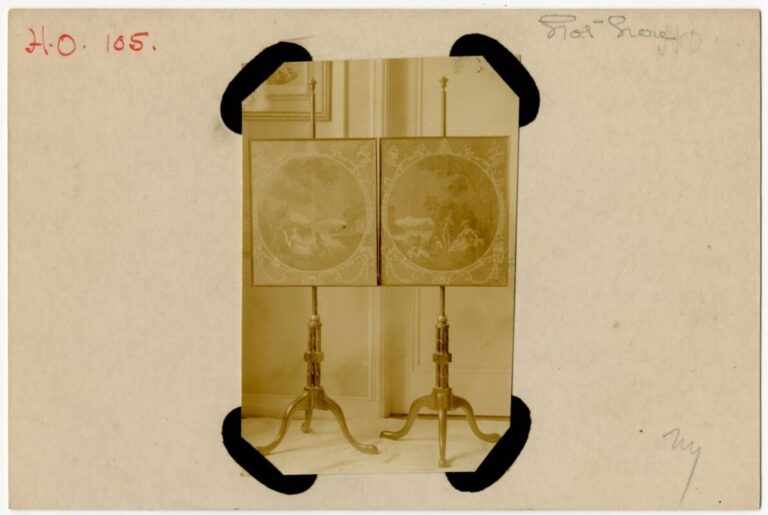
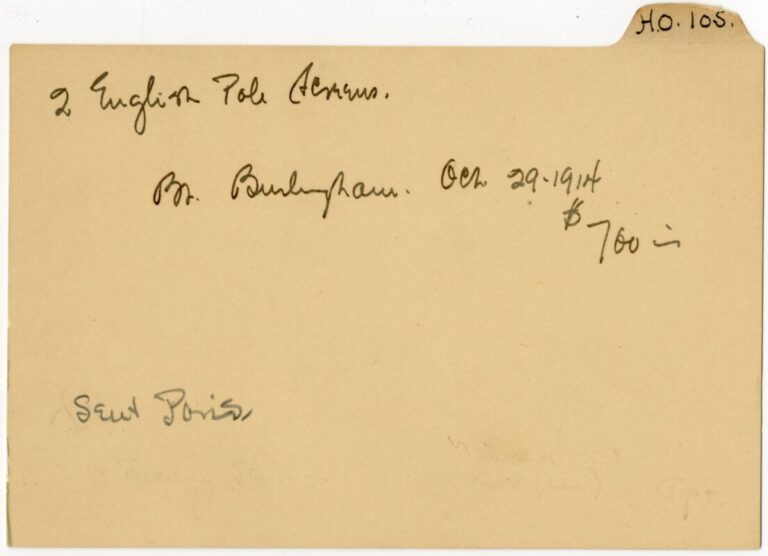
The information included in this card “database” is very useful as our staff research Deering’s collecting habits and Vizcaya’s displays, helping tell the story of the house and its collections.
Visit Museum collections | Vizcaya to explore the Purchase Ledger Cards and the objects they depict.
This project has been made possible in part by a major grant from the National Endowment for the Humanities: Democracy demands wisdom.
Any views, findings, conclusions, or recommendations expressed in here, do not necessarily represent those of the National Endowment for the Humanities.
Support Vizcaya’s Conservation Efforts
Help Vizcaya continue to preserve its vast collection by making an online donation.
Together, we can safeguard this rich cultural heritage for future generations to explore and appreciate.
